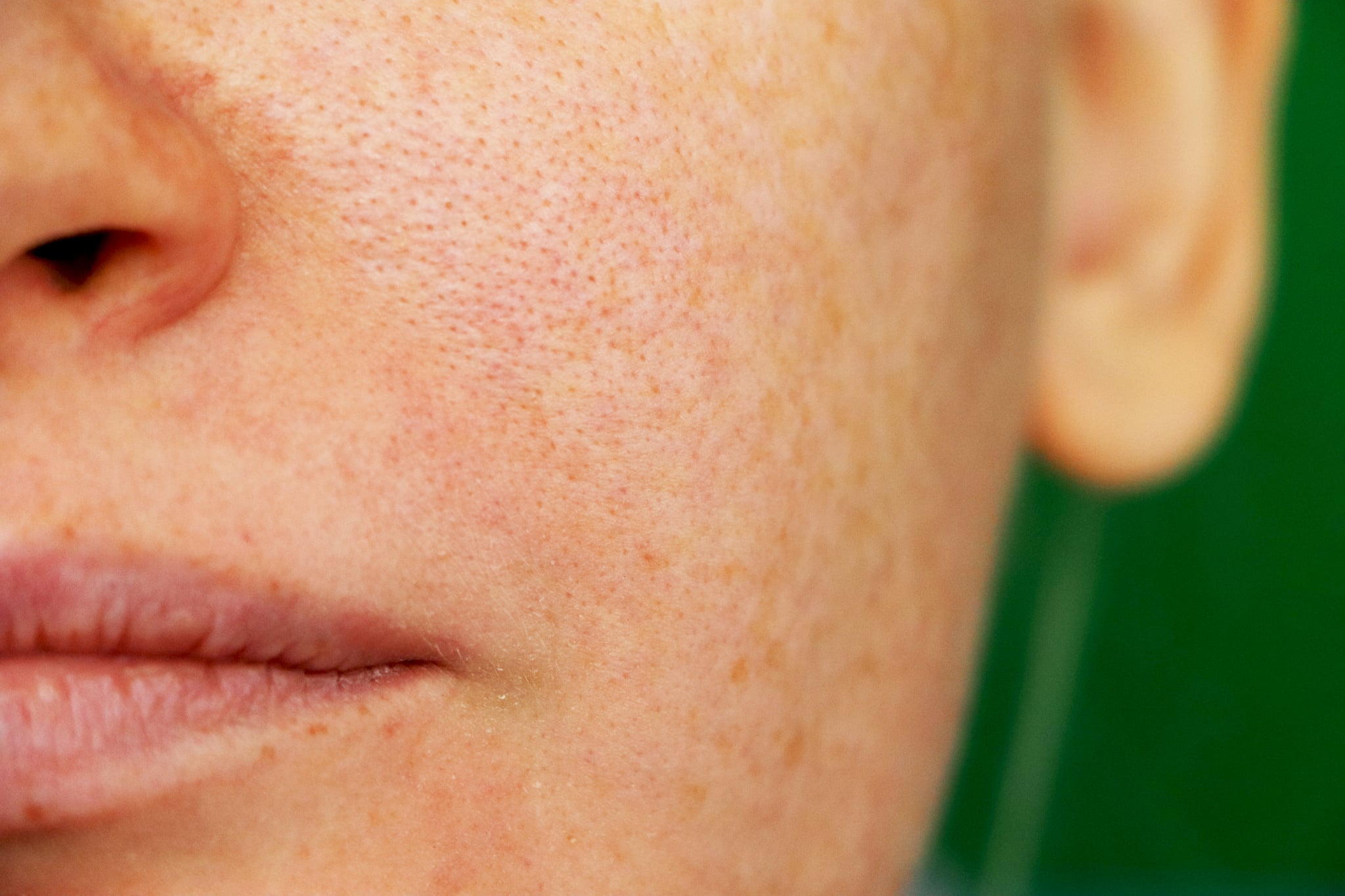
Hyperpigmentation is one of the most common skin-care concerns out there, and yet dermatologists often herald it as one of the most difficult to treat. There are different types of hyperpigmentation, with each requiring a varying plan of attack, so getting an exact diagnosis is essential. Melasma is one of the more extreme displays of hyperpigmentation, affecting primarily women between 20 and 40 years old, but also some men, too. It’s estimated that anywhere between 1.5 percent to 33 percent of the population will get it at some point.
Melasma is a skin condition that causes dark patches or a high-concentration of spots to appear on the face (like that oft-discussed “melasma mustache”), and in some instances, the neck, chest, and hands. It’s triggered by the sun and hormonal changes, but its root cause is harder to pinpoint, making it tricky to treat with a one-size-fits-all approach. Whereas typical sun spots and post-inflammatory acne marks can lighten with a good vitamin C serum and exfoliation, melasma is a bit more stubborn and quick to come back. That said, it’s not impossible to control — you just need to know how.
Ahead, we spoke with two experts to get the scoop on melasma. Keep reading to find out more, like the best treatment for melasma on the face and whether or not it can be cured.
What Is Melasma?
“Melasma is a pigmentation disorder that causes patches of discoloration (usually darker pigment) in different areas, primarily the face,” Ami Dalal, PA-C, a certified physician assistant at Schweiger Dermatology Group, tells POPSUGAR. It differs from other forms of hyperpigmentation in two main ways: who it affects and how it presents.
“It can affect anyone, but it’s more common in women due to their estrogen and progesterone levels,” says Lindsey Zubritsky, MD, FAAD, a board-certified dermatologist and Sum Bum partner. It affects people of all skin tones but is more prevalent in those with medium to dark skin. Unlike acne marks or sun spots, which typically form small, focused dots, melasma forms “broad patches and can look like large freckles,” she adds.
Melasma Causes
“While doctors aren’t too sure what can be the main cause for melasma, [it] can include hormonal imbalance or change (such as taking birth control), pregnancy (which is why it’s often called the ‘mask of pregnancy’), or prolonged sun exposure,” says Dr. Zubritsky.
Dalal adds that radiation, such as UV light, visible light, and heat, can also contribute to the skin condition. “Melasma worsens when something triggers the skin cells to go into overdrive,” she says. Additionally, she adds vitamin B12 and iron deficiency have been linked to it.
Melasma Treatment: How to Get Rid of Melasma
Once a doctor determines that you have melasma, you can begin your journey of treating it. However, keep in mind that the factors listed above can continue to trigger pigmentation and, as a result, worsen your condition. Your melasma may also go away on its own after some time.
To treat melasma, there are a few key steps you can take. First, you need to increase skin-cell turnover. This can be done with the use of chemical peels or retinoids. You can also “suppress the initiation of melasma by using creams daily that inhibit tyrosinase production,” says Dalal.
A dermatologist may prescribe you a topical treatment to add to your daily skin-care routine at home. There are three ingredients commonly found in these prescription-grade products: hydroquinone, a potent dark spot treatment; tretinoin, which is a strong retinoid; and a mild corticosteroid, an anti-inflammatory. For gentler, over-the-counter options, look for ingredients like azelaic acid, kojic acid, and vitamin C.
There are also in-office options that you can pursue under the guidance of a dermatologist. This includes chemical peels, microneedling, and laser treatments. Unfortunately, according to the American Associate of Dermatology, most insurance plans do not cover treatment as it’s not deemed medically necessary.
And lastly, the most important step is to protect your skin from harmful UV rays to prevent malasma from forming. “If you plan on being exposed to the sun, even for a short period of time, regular application of SPF will definitely help,” says Dr. Zubritsky. She recommends the Sun Bum Glow SPF 30 Sunscreen Face Lotion ($18), which has a subtle tint. We also like the EltaMD UV Daily Face Sunscreen with Zinc Oxide ($34). You should look for an SPF of at least 30 or higher and be diligent about reapplying.
Is Melasma Curable?
Melasma is one of those conditions that sticks around for the long haul — it can be treated, but never cured completely. “You have to make a conscious effort to protect your skin while treating melasma and after improvement as well,” says Dalal. Dr. Zubritsky adds, “This is why the use of SPF is so important as the sun’s rays can begin to darken the appearance of melasma again.”
Melasma Treatment Before and Afters

